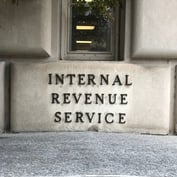In 1915, statistician Willford I. King noted in his study “The Wealth and Income of the People of the United States” that the richest 1% possessed about 15% of the nation’s income. Today, the disparity has grown so that 1% accounts for 24% of the nation’s income. “This is not the type of thing which a democratic society—a capitalist democratic society—can really accept without addressing,” said Alan Greenspan, the former Federal Reserve Board chairman. However, experts aren’t sure how to reverse the trend because no one can agree on what is causing it. Examination of the problem by Slate puts a percentage share of the blame on factors like race, gender, the computer revolution, immigration, trade, government policies, the decline of labor, compensation policies on Wall Street and in executive suites, and education. Also under examination: the arguable importance of income inequality.
Don’t forget you can visit MyAlerts to manage your alerts at any time.








 March 09, 2012 at 10:19 AM
March 09, 2012 at 10:19 AM










